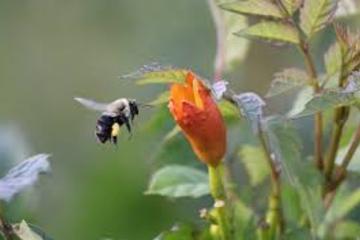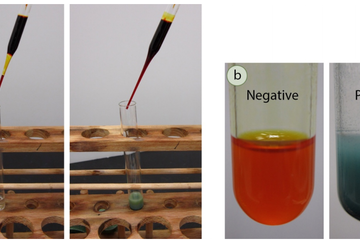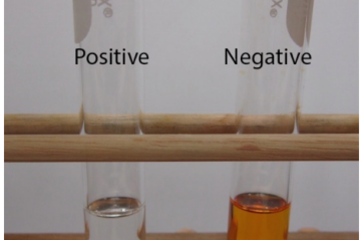We found 75 results that contain "tag 1"
Posted on: Agile testers group 2


WHAT IS WORKPLACE FLEXIBILITY?
WHAT IS WORKPLACE FLEXIBILITY?
"Flexibility is about an employee and an employer making changes to when, where and how a person will work to better meet individual and business needs. Flexibility enables both individual and business needs to be met through making changes to the time (when), location (where) and manner (how) in which an employee works. Flexibility should be mutually beneficial to both the employer and employee and result in superior outcomes." (1)
Formal flexibility policies are "officially approved human resources policies, as well as any official policies that give supervisors discretion to provide flexibility."
Informal flexibility refers to "policies that are not official and not written down but are still available to some employees, even on a discretionary basis."
While most formal work arrangements can usually be identified, organizations acknowledge that utilization statistics probably underestimate the true reach and impact of flexibility, as they cannot accurately determine the extent of informal flexibility—for example, employees who occasionally alter their work hours or work from home. (24)
CASE EXAMPLES
JP Morgan Chase found that 95% of employees working in an environment where the manager is sensitive to work and personal life—including informal flexibility— feel motivated to exceed expectations, compared to 80% of employees in environments where the manager is not sensitive to needs for informal flexibility. (24)
"At Bristol-Myers Squibb, 14% of employees have a formal flexible work arrangement. Of the remaining, 67% say they have informal flexibility. When asked about the importance of informal flexibility in terms of their intention to continue working at the company, the response is resounding: 71% say that it is 'very important.' Again, women place even greater importance on informal flexibility; 78% of women say it is 'very important' to their staying, compared to 65% of men. The retention effect is especially strong for women in management: 84% say informal flexibility helps keep them at the company." (24)
"Flexibility is about an employee and an employer making changes to when, where and how a person will work to better meet individual and business needs. Flexibility enables both individual and business needs to be met through making changes to the time (when), location (where) and manner (how) in which an employee works. Flexibility should be mutually beneficial to both the employer and employee and result in superior outcomes." (1)
Formal flexibility policies are "officially approved human resources policies, as well as any official policies that give supervisors discretion to provide flexibility."
Informal flexibility refers to "policies that are not official and not written down but are still available to some employees, even on a discretionary basis."
While most formal work arrangements can usually be identified, organizations acknowledge that utilization statistics probably underestimate the true reach and impact of flexibility, as they cannot accurately determine the extent of informal flexibility—for example, employees who occasionally alter their work hours or work from home. (24)
CASE EXAMPLES
JP Morgan Chase found that 95% of employees working in an environment where the manager is sensitive to work and personal life—including informal flexibility— feel motivated to exceed expectations, compared to 80% of employees in environments where the manager is not sensitive to needs for informal flexibility. (24)
"At Bristol-Myers Squibb, 14% of employees have a formal flexible work arrangement. Of the remaining, 67% say they have informal flexibility. When asked about the importance of informal flexibility in terms of their intention to continue working at the company, the response is resounding: 71% say that it is 'very important.' Again, women place even greater importance on informal flexibility; 78% of women say it is 'very important' to their staying, compared to 65% of men. The retention effect is especially strong for women in management: 84% say informal flexibility helps keep them at the company." (24)
DISCIPLINARY CONTENT
Posted on: Queens group


Forests
he eastern United States and Canada are well-known for gorgeous autumn colors.
NAVIGATING CONTEXT
Posted on: #iteachmsu


Biochemistry -test
Biochemistry, study of the chemical substances and processes that occur in plants, animals, and microorganisms and of the changes they undergo during development and life. It deals with the chemistry of life, and as such it draws on the techniques of analytical, organic, and physical chemistry, as well as those of physiologists concerned with the molecular basis of vital processes. All chemical changes within the organism—either the degradation of substances, generally to gain necessary energy, or the buildup of complex molecules necessary for life processes—are collectively termed metabolism. These chemical changes depend on the action of organic catalysts known as enzymes, and enzymes, in turn, depend for their existence on the genetic apparatus of the cell. It is not surprising, therefore, that biochemistry enters into the investigation of chemical changes in disease, drug action, and other aspects of medicine, as well as in nutrition, genetics, and agriculture.
The term biochemistry is synonymous with two somewhat older terms: physiological chemistry and biological chemistry. Those aspects of biochemistry that deal with the chemistry and function of very large molecules (e.g., proteins and nucleic acids) are often grouped under the term molecular biology. Biochemistry is a young science, having been known under that term only since about 1900. Its origins, however, can be traced much further back; its early history is part of the early history of both physiology and chemistry.
Historical background
The particularly significant past events in biochemistry have been concerned with placing biological phenomena on firm chemical foundations.
Before chemistry could contribute adequately to medicine and agriculture, however, it had to free itself from immediate practical demands in order to become a pure science. This happened in the period from about 1650 to 1780, starting with the work of Robert Boyle and culminating in that of Antoine-Laurent Lavoisier, the father of modern chemistry. Boyle questioned the basis of the chemical theory of his day and taught that the proper object of chemistry was to determine the composition of substances. His contemporary John Mayow observed the fundamental analogy between the respiration of an animal and the burning, or oxidation, of organic matter in air. Then, when Lavoisier carried out his fundamental studies on chemical oxidation, grasping the true nature of the process, he also showed, quantitatively, the similarity between chemical oxidation and the respiratory process. Photosynthesis was another biological phenomenon that occupied the attention of the chemists of the late 18th century. The demonstration, through the combined work of Joseph Priestley, Jan Ingenhousz, and Jean Senebier, that photosynthesis is essentially the reverse of respiration was a milestone in the development of biochemical thought.
Get unlimited ad-free access to all Britannica’s trusted content.
Start Your Free Trial Today
In spite of these early fundamental discoveries, rapid progress in biochemistry had to wait upon the development of structural organic chemistry, one of the great achievements of 19th-century science. A living organism contains many thousands of different chemical compounds. The elucidation of the chemical transformations undergone by these compounds within the living cell is a central problem of biochemistry. Clearly, the determination of the molecular structure of the organic substances present in living cells had to precede the study of the cellular mechanisms, whereby these substances are synthesized and degraded.
There are few sharp boundaries in science, and the boundaries between organic and physical chemistry, on the one hand, and biochemistry, on the other, have always shown much overlap. Biochemistry has borrowed the methods and theories of organic and physical chemistry and applied them to physiological problems. Progress in this path was at first impeded by a stubborn misconception in scientific thinking—the error of supposing that the transformations undergone by matter in the living organism were not subject to the chemical and physical laws that applied to inanimate substances and that consequently these “vital” phenomena could not be described in ordinary chemical or physical terms. Such an attitude was taken by the vitalists, who maintained that natural products formed by living organisms could never be synthesized by ordinary chemical means. The first laboratory synthesis of an organic compound, urea, by Friedrich Wöhler in 1828, was a blow to the vitalists but not a decisive one. They retreated to new lines of defense, arguing that urea was only an excretory substance—a product of breakdown and not of synthesis. The success of the organic chemists in synthesizing many natural products forced further retreats of the vitalists. It is axiomatic in modern biochemistry that the chemical laws that apply to inanimate materials are equally valid within the living cell.
Advertisement
At the same time that progress was being impeded by a misplaced kind of reverence for living phenomena, the practical needs of man operated to spur the progress of the new science. As organic and physical chemistry erected an imposing body of theory in the 19th century, the needs of the physician, the pharmacist, and the agriculturalist provided an ever-present stimulus for the application of the new discoveries of chemistry to various urgent practical problems.
Two outstanding figures of the 19th century, Justus von Liebig and Louis Pasteur, were particularly responsible for dramatizing the successful application of chemistry to the study of biology. Liebig studied chemistry in Paris and carried back to Germany the inspiration gained by contact with the former students and colleagues of Lavoisier. He established at Giessen a great teaching and research laboratory, one of the first of its kind, which drew students from all over Europe.
Besides putting the study of organic chemistry on a firm basis, Liebig engaged in extensive literary activity, attracting the attention of all scientists to organic chemistry and popularizing it for the layman as well. His classic works, published in the 1840s, had a profound influence on contemporary thought. Liebig described the great chemical cycles in nature. He pointed out that animals would disappear from the face of the Earth if it were not for the photosynthesizing plants, since animals require for their nutrition the complex organic compounds that can be synthesized only by plants. The animal excretions and the animal body after death are also converted by a process of decay to simple products that can be re-utilized only by plants.
In contrast with animals, green plants require for their growth only carbon dioxide, water, mineral salts, and sunlight. The minerals must be obtained from the soil, and the fertility of the soil depends on its ability to furnish the plants with these essential nutrients. But the soil is depleted of these materials by the removal of successive crops; hence the need for fertilizers. Liebig pointed out that chemical analysis of plants could serve as a guide to the substances that should be present in fertilizers. Agricultural chemistry as an applied science was thus born.
In his analysis of fermentation, putrefaction, and infectious disease, Liebig was less fortunate. He admitted the similarity of these phenomena but refused to admit that living organisms might function as the causative agents. It remained for Pasteur to clarify that matter. In the 1860s Pasteur proved that various yeasts and bacteria were responsible for “ferments,” substances that caused fermentation and, in some cases, disease. He also demonstrated the usefulness of chemical methods in studying these tiny organisms and was the founder of what came to be called bacteriology.
Later, in 1877, Pasteur’s ferments were designated as enzymes, and, in 1897, the German chemist E. Buchner clearly showed that fermentation could occur in a press juice of yeast, devoid of living cells. Thus a life process of cells was reduced by analysis to a nonliving system of enzymes. The chemical nature of enzymes remained obscure until 1926, when the first pure crystalline enzyme (urease) was isolated. This enzyme and many others subsequently isolated proved to be proteins, which had already been recognized as high-molecular-weight chains of subunits called amino acids.
The mystery of how minute amounts of dietary substances known as the vitamins prevent diseases such as beriberi, scurvy, and pellagra became clear in 1935, when riboflavin (vitamin B2) was found to be an integral part of an enzyme. Subsequent work has substantiated the concept that many vitamins are essential in the chemical reactions of the cell by virtue of their role in enzymes.
In 1929 the substance adenosine triphosphate (ATP) was isolated from muscle. Subsequent work demonstrated that the production of ATP was associated with respiratory (oxidative) processes in the cell. In 1940 F.A. Lipmann proposed that ATP is the common form of energy exchange in many cells, a concept now thoroughly documented. ATP has been shown also to be a primary energy source for muscular contraction.
The use of radioactive isotopes of chemical elements to trace the pathway of substances in the animal body was initiated in 1935 by two U.S. chemists, R. Schoenheimer and D. Rittenberg. That technique provided one of the single most important tools for investigating the complex chemical changes that occur in life processes. At about the same time, other workers localized the sites of metabolic reactions by ingenious technical advances in the studies of organs, tissue slices, cell mixtures, individual cells, and, finally, individual cell constituents, such as nuclei, mitochondria, ribosomes, lysosomes, and membranes.
In 1869 a substance was isolated from the nuclei of pus cells and was called nucleic acid, which later proved to be deoxyribonucleic acid (DNA), but it was not until 1944 that the significance of DNA as genetic material was revealed, when bacterial DNA was shown to change the genetic matter of other bacterial cells. Within a decade of that discovery, the double helix structure of DNA was proposed by Watson and Crick, providing a firm basis for understanding how DNA is involved in cell division and in maintaining genetic characteristics.
Advances have continued since that time, with such landmark events as the first chemical synthesis of a protein, the detailed mapping of the arrangement of atoms in some enzymes, and the elucidation of intricate mechanisms of metabolic regulation, including the molecular action of hormones.
SpaceNext50
Biochemistry
Quick Facts
key people
George P. Smith
Gregory P. Winter
Joachim Frank
Justus, baron von Liebig
Frederick Sanger
Bruce Ames
Melvin Calvin
Aleksandr Oparin
J. Craig Venter
Dorothy Maud Wrinch
related topics
Chemistry
Biology
Immunochemistry
Key-lock hypothesis
Histochemistry
The term biochemistry is synonymous with two somewhat older terms: physiological chemistry and biological chemistry. Those aspects of biochemistry that deal with the chemistry and function of very large molecules (e.g., proteins and nucleic acids) are often grouped under the term molecular biology. Biochemistry is a young science, having been known under that term only since about 1900. Its origins, however, can be traced much further back; its early history is part of the early history of both physiology and chemistry.
Historical background
The particularly significant past events in biochemistry have been concerned with placing biological phenomena on firm chemical foundations.
Before chemistry could contribute adequately to medicine and agriculture, however, it had to free itself from immediate practical demands in order to become a pure science. This happened in the period from about 1650 to 1780, starting with the work of Robert Boyle and culminating in that of Antoine-Laurent Lavoisier, the father of modern chemistry. Boyle questioned the basis of the chemical theory of his day and taught that the proper object of chemistry was to determine the composition of substances. His contemporary John Mayow observed the fundamental analogy between the respiration of an animal and the burning, or oxidation, of organic matter in air. Then, when Lavoisier carried out his fundamental studies on chemical oxidation, grasping the true nature of the process, he also showed, quantitatively, the similarity between chemical oxidation and the respiratory process. Photosynthesis was another biological phenomenon that occupied the attention of the chemists of the late 18th century. The demonstration, through the combined work of Joseph Priestley, Jan Ingenhousz, and Jean Senebier, that photosynthesis is essentially the reverse of respiration was a milestone in the development of biochemical thought.
Get unlimited ad-free access to all Britannica’s trusted content.
Start Your Free Trial Today
In spite of these early fundamental discoveries, rapid progress in biochemistry had to wait upon the development of structural organic chemistry, one of the great achievements of 19th-century science. A living organism contains many thousands of different chemical compounds. The elucidation of the chemical transformations undergone by these compounds within the living cell is a central problem of biochemistry. Clearly, the determination of the molecular structure of the organic substances present in living cells had to precede the study of the cellular mechanisms, whereby these substances are synthesized and degraded.
There are few sharp boundaries in science, and the boundaries between organic and physical chemistry, on the one hand, and biochemistry, on the other, have always shown much overlap. Biochemistry has borrowed the methods and theories of organic and physical chemistry and applied them to physiological problems. Progress in this path was at first impeded by a stubborn misconception in scientific thinking—the error of supposing that the transformations undergone by matter in the living organism were not subject to the chemical and physical laws that applied to inanimate substances and that consequently these “vital” phenomena could not be described in ordinary chemical or physical terms. Such an attitude was taken by the vitalists, who maintained that natural products formed by living organisms could never be synthesized by ordinary chemical means. The first laboratory synthesis of an organic compound, urea, by Friedrich Wöhler in 1828, was a blow to the vitalists but not a decisive one. They retreated to new lines of defense, arguing that urea was only an excretory substance—a product of breakdown and not of synthesis. The success of the organic chemists in synthesizing many natural products forced further retreats of the vitalists. It is axiomatic in modern biochemistry that the chemical laws that apply to inanimate materials are equally valid within the living cell.
Advertisement
At the same time that progress was being impeded by a misplaced kind of reverence for living phenomena, the practical needs of man operated to spur the progress of the new science. As organic and physical chemistry erected an imposing body of theory in the 19th century, the needs of the physician, the pharmacist, and the agriculturalist provided an ever-present stimulus for the application of the new discoveries of chemistry to various urgent practical problems.
Two outstanding figures of the 19th century, Justus von Liebig and Louis Pasteur, were particularly responsible for dramatizing the successful application of chemistry to the study of biology. Liebig studied chemistry in Paris and carried back to Germany the inspiration gained by contact with the former students and colleagues of Lavoisier. He established at Giessen a great teaching and research laboratory, one of the first of its kind, which drew students from all over Europe.
Besides putting the study of organic chemistry on a firm basis, Liebig engaged in extensive literary activity, attracting the attention of all scientists to organic chemistry and popularizing it for the layman as well. His classic works, published in the 1840s, had a profound influence on contemporary thought. Liebig described the great chemical cycles in nature. He pointed out that animals would disappear from the face of the Earth if it were not for the photosynthesizing plants, since animals require for their nutrition the complex organic compounds that can be synthesized only by plants. The animal excretions and the animal body after death are also converted by a process of decay to simple products that can be re-utilized only by plants.
In contrast with animals, green plants require for their growth only carbon dioxide, water, mineral salts, and sunlight. The minerals must be obtained from the soil, and the fertility of the soil depends on its ability to furnish the plants with these essential nutrients. But the soil is depleted of these materials by the removal of successive crops; hence the need for fertilizers. Liebig pointed out that chemical analysis of plants could serve as a guide to the substances that should be present in fertilizers. Agricultural chemistry as an applied science was thus born.
In his analysis of fermentation, putrefaction, and infectious disease, Liebig was less fortunate. He admitted the similarity of these phenomena but refused to admit that living organisms might function as the causative agents. It remained for Pasteur to clarify that matter. In the 1860s Pasteur proved that various yeasts and bacteria were responsible for “ferments,” substances that caused fermentation and, in some cases, disease. He also demonstrated the usefulness of chemical methods in studying these tiny organisms and was the founder of what came to be called bacteriology.
Later, in 1877, Pasteur’s ferments were designated as enzymes, and, in 1897, the German chemist E. Buchner clearly showed that fermentation could occur in a press juice of yeast, devoid of living cells. Thus a life process of cells was reduced by analysis to a nonliving system of enzymes. The chemical nature of enzymes remained obscure until 1926, when the first pure crystalline enzyme (urease) was isolated. This enzyme and many others subsequently isolated proved to be proteins, which had already been recognized as high-molecular-weight chains of subunits called amino acids.
The mystery of how minute amounts of dietary substances known as the vitamins prevent diseases such as beriberi, scurvy, and pellagra became clear in 1935, when riboflavin (vitamin B2) was found to be an integral part of an enzyme. Subsequent work has substantiated the concept that many vitamins are essential in the chemical reactions of the cell by virtue of their role in enzymes.
In 1929 the substance adenosine triphosphate (ATP) was isolated from muscle. Subsequent work demonstrated that the production of ATP was associated with respiratory (oxidative) processes in the cell. In 1940 F.A. Lipmann proposed that ATP is the common form of energy exchange in many cells, a concept now thoroughly documented. ATP has been shown also to be a primary energy source for muscular contraction.
The use of radioactive isotopes of chemical elements to trace the pathway of substances in the animal body was initiated in 1935 by two U.S. chemists, R. Schoenheimer and D. Rittenberg. That technique provided one of the single most important tools for investigating the complex chemical changes that occur in life processes. At about the same time, other workers localized the sites of metabolic reactions by ingenious technical advances in the studies of organs, tissue slices, cell mixtures, individual cells, and, finally, individual cell constituents, such as nuclei, mitochondria, ribosomes, lysosomes, and membranes.
In 1869 a substance was isolated from the nuclei of pus cells and was called nucleic acid, which later proved to be deoxyribonucleic acid (DNA), but it was not until 1944 that the significance of DNA as genetic material was revealed, when bacterial DNA was shown to change the genetic matter of other bacterial cells. Within a decade of that discovery, the double helix structure of DNA was proposed by Watson and Crick, providing a firm basis for understanding how DNA is involved in cell division and in maintaining genetic characteristics.
Advances have continued since that time, with such landmark events as the first chemical synthesis of a protein, the detailed mapping of the arrangement of atoms in some enzymes, and the elucidation of intricate mechanisms of metabolic regulation, including the molecular action of hormones.
SpaceNext50
Biochemistry
Quick Facts
key people
George P. Smith
Gregory P. Winter
Joachim Frank
Justus, baron von Liebig
Frederick Sanger
Bruce Ames
Melvin Calvin
Aleksandr Oparin
J. Craig Venter
Dorothy Maud Wrinch
related topics
Chemistry
Biology
Immunochemistry
Key-lock hypothesis
Histochemistry
Posted on: #iteachmsu


Education - 2
What is the CPD framework for teacher educators?
The framework describes the overall competence and the kinds of professional knowledge, understanding and skills associated with the role of a teacher educator. It is used to help teacher educators, and those involved with the professional development of teacher educators, to think about and further develop the overall competence, knowledge, understanding and skills required for effective and supportive teacher education. It is based on an extensive survey of research into teacher educator competence in a wide range of educational settings and covering a range of teacher educator roles. It has been refined through feedback provided by senior academics and teacher educators from around the world and working in different areas of teacher education.
The framework describes the overall competence and the kinds of professional knowledge, understanding and skills associated with the role of a teacher educator. It is used to help teacher educators, and those involved with the professional development of teacher educators, to think about and further develop the overall competence, knowledge, understanding and skills required for effective and supportive teacher education. It is based on an extensive survey of research into teacher educator competence in a wide range of educational settings and covering a range of teacher educator roles. It has been refined through feedback provided by senior academics and teacher educators from around the world and working in different areas of teacher education.
Posted on: #iteachmsu


research
This article is about the search for knowledge. For other uses, see Research (disambiguation).
"Researcher" redirects here. For other uses, see Researcher (disambiguation).
"Original research" redirects here. For the Wikipedia prohibition against user-generated, unpublished research
"Researcher" redirects here. For other uses, see Researcher (disambiguation).
"Original research" redirects here. For the Wikipedia prohibition against user-generated, unpublished research
PEDAGOGICAL DESIGN
Posted on: #iteachmsu


CB
This article is about the search for knowledge. For other uses, see Research (disambiguation).
"Researcher" redirects here. For other uses, see Researcher (disambiguation).
"Original research" redirects here. For the Wikipedia prohibition against user-generated, unpublished research
"Researcher" redirects here. For other uses, see Researcher (disambiguation).
"Original research" redirects here. For the Wikipedia prohibition against user-generated, unpublished research
Posted on: #iteachmsu


By chathu: Fish Farming
Fish farming is an ideal business idea for investors with available land, and it doesn’t always require a large body of water. You can start a fish farm either by creating fish ponds or investing in fish tanks; it’s a highly scalable business idea. Once you have the proper knowledge of fish raising, you will be able to decide the type of fish to raise. According to FinModelsLab, a well-run fish farm can produce a return on investment (ROI) of 15% to 40% annually, with many fish farmers achieving a full return on their investment within three to five years.
Fish such as tilapia, cod, trout, and catfish are popular because they are easy to raise and in high demand. Small-scale farms are the usual suppliers of fish in their local supermarkets and restaurants.
Other popular varieties of commercially-raised fish include:
Yellow Perch
Eel
Grass Carp
Tuna
Salmon
Not all fish are raised for food. Goldfish and koi are popular fish to farm as well. For non-food fish, focus on cultivating premium species that will fetch a higher price when you sell. Whether you are raising fish for food or not, adopting sustainable farming practices will be better for both your business branding and your long-term operational costs.
The decision as to which fish you want to raise will ultimately rely on your skill, financial capacity, market demand, and agro-climatic condition. This refers to the normal soil types, rainfall, temperature, and water availability that affect the type of vegetation in the area.
Fish such as tilapia, cod, trout, and catfish are popular because they are easy to raise and in high demand. Small-scale farms are the usual suppliers of fish in their local supermarkets and restaurants.
Other popular varieties of commercially-raised fish include:
Yellow Perch
Eel
Grass Carp
Tuna
Salmon
Not all fish are raised for food. Goldfish and koi are popular fish to farm as well. For non-food fish, focus on cultivating premium species that will fetch a higher price when you sell. Whether you are raising fish for food or not, adopting sustainable farming practices will be better for both your business branding and your long-term operational costs.
The decision as to which fish you want to raise will ultimately rely on your skill, financial capacity, market demand, and agro-climatic condition. This refers to the normal soil types, rainfall, temperature, and water availability that affect the type of vegetation in the area.
Posted on: Smoke test group on...


Smoke test article 1 : 12 Jyotirlingas of Lord Shiv
The jyotirlinga is the supreme partless reality, out of which Shiva partly appears. The jyothirlinga shrines, thus are places where Shiva appeared as a fiery column of light. Originally there were believed to be 64 jyothirlingas while 12 of them are considered to be very auspicious and holy. Each of the twelve jyothirlinga sites take the name of the presiding deity – each considered different manifestation of Shiva. At all these sites, the primary image is lingam representing the beginningless and endless Stambha pillar, symbolizing the infinite nature of Shiva. The twelve jyothirlinga are Somnath in Gujarat, Mallikarjuna at Srisailam in Andra Pradesh, Mahakaleswar at Ujjain in Madhya Pradesh, Omkareshwar in Madhya Pradesh, Kedarnath in Himalayas, Bhimashankar in Maharashtra, Viswanath at Varanasi in Uttar Pradesh, Triambakeshwar in Maharashtra, Vaidyanath Jyotirlinga at Deogarh in Jharkhand, Nageswar at Dwarka in Gujarat, Rameshwar at Rameswaram in Tamil Nadu and Ghushmeshwar at Shiwar in Sawai Madhopur district Rajasthan, 12th joytrilinga is Grishneshwar at ellora in aurangabad district Maharashtra.The following sanskrit sloka ( द्वादश ज्योतिर्लिंग स्तोत्रम्) (Dwadasha Jyotirlingum Strota) describes about the 12 Jyotirlingas
Authored by: Venturit
Navigating Context
Posted on: #iteachmsu


By Chathu: Fish Farming article
Fish farming is an ideal business idea for investors with available land, and it doesn’t always require a large body of water. You can start a fish farm either by creating fish ponds or investing in fish tanks; it’s a highly scalable business idea. Once you have the proper knowledge of fish raising, you will be able to decide the type of fish to raise. According to FinModelsLab, a well-run fish farm can produce a return on investment (ROI) of 15% to 40% annually, with many fish farmers achieving a full return on their investment within three to five years.
Fish such as tilapia, cod, trout, and catfish are popular because they are easy to raise and in high demand. Small-scale farms are the usual suppliers of fish in their local supermarkets and restaurants.
Other popular varieties of commercially-raised fish include:
Yellow Perch
Eel
Grass Carp
Tuna
Salmon
Not all fish are raised for food. Goldfish and koi are popular fish to farm as well. For non-food fish, focus on cultivating premium species that will fetch a higher price when you sell. Whether you are raising fish for food or not, adopting sustainable farming practices will be better for both your business branding and your long-term operational costs.
The decision as to which fish you want to raise will ultimately rely on your skill, financial capacity, market demand, and agro-climatic condition. This refers to the normal soil types, rainfall, temperature, and water availability that affect the type of vegetation in the area.
Fish such as tilapia, cod, trout, and catfish are popular because they are easy to raise and in high demand. Small-scale farms are the usual suppliers of fish in their local supermarkets and restaurants.
Other popular varieties of commercially-raised fish include:
Yellow Perch
Eel
Grass Carp
Tuna
Salmon
Not all fish are raised for food. Goldfish and koi are popular fish to farm as well. For non-food fish, focus on cultivating premium species that will fetch a higher price when you sell. Whether you are raising fish for food or not, adopting sustainable farming practices will be better for both your business branding and your long-term operational costs.
The decision as to which fish you want to raise will ultimately rely on your skill, financial capacity, market demand, and agro-climatic condition. This refers to the normal soil types, rainfall, temperature, and water availability that affect the type of vegetation in the area.
Posted by: Chathuri Hewapathirana 1
Posted on: Queens group


Biochemistry
Biochemistry is the application of chemistry to the study of biological processes at the cellular and molecular level. It emerged as a distinct discipline around the beginning of the 20th century when scientists combined chemistry, physiology, and biology to investigate the chemistry of living systems.
tets
1oufi'aofio
DFHAIHF
FGJIFI
lwa fo'i io iaof
afewof
'a foe
tets
1oufi'aofio
DFHAIHF
FGJIFI
lwa fo'i io iaof
afewof
'a foe
Authored by: chathuri
Pedagogical Design
Posted on: #iteachmsu


Chemical testing overview
Overview
Before spectroscopic analysis (IR, NMR) became commonplace in the organic chemistry lab, chemical tests were heavily relied upon to support compound identification. A chemical test is typically a fast reaction performed in a test tube that gives a dramatic visual clue (a color change, precipitate, or gas formation) as evidence for a chemical reaction. For example, addition of an orange chromic acid reagent to some compounds causes the chromium reagent to change to a blue-green color (Figure 6.37a). This is considered a "positive" test result, and in this case indicates the presence of a functional group that can be oxidized (alcohol or aldehyde). A negative test result is retention of the original color of the reagent, in this case the orange color Description is the fiction-writing mode for transmitting a mental image of the particulars of a story. Together with dialogue, narration, exposition, and summarization, description is one of the most widely recognized of the fiction-writing modes. As stated in Writing from A to Z, edited by Kirk Polking, description is more than the amassing of details; it is bringing something to life by carefully choosing and arranging words and phrases to produce the desired effect.[6] The most appropriate and effective techniques for presenting description are a matter of ongoing discussion among writers and writing coaches.Description is the fiction-writing mode for transmitting a mental image of the particulars of a story. Together with dialogue, narration, exposition, and summarization, description is one of the most widely recognized of the fiction-writing modes. As stated in Writing from A to Z, edited by Kirk Polking, description is more than the amassing of details; it is bringing something to life by carefully choosing and arranging words and phrases to produce the desired effect.[6] The most appropriate and effective techniques for presenting description are a matter of ongoing discussion among writers and writing coaches.Description is the fiction-writing mode for transmitting a mental image of the particulars of a story. Together with dialogue, narration, exposition, and summarization, description is one of the most widely recognized of the fiction-writing modes. As stated in Writing from A to Z, edited by Kirk Polking, description is more than the amassing of details; it is bringing something to life by carefully choosing and arranging words and phrases to produce the desired effect.[6] The most appropriate and effective techniques for presenting description are a matter of ongoing discussion among writers and writing coaches.Description is the fiction-writing mode for transmitting a mental image of the particulars of a story. Together with dialogue, narration, exposition, and summarization, description is one of the most widely recognized of the fiction-writing modes. As stated in Writing from A to Z, edited by Kirk Polking, description is more than the amassing of details; it is bringing something to life by carefully choosing and arranging words and phrases to produce the desired effect.[6] The most appropriate and effective techniques for presenting description are a matter of ongoing discussion among writers and writing coaches.Description is the fiction-writing mode for transmitting a mental image of the particulars of a story. Together with dialogue, narration, exposition, and summarization, description is one of the most widely recognized of the fiction-writing modes. As stated in Writing from A to Z, edited by Kirk Polking, description is more than the amassing of details; it is bringing something to life by carefully choosing and arranging words and phrases to produce the desired effect.[6] The most appropriate and effective techniques for presenting description are a matter of ongoing discussion among writers and writing coaches.Description is the fiction-writing mode for transmitting a mental image of the particulars of a story. Together with dialogue, narration, exposition, and summarization, description is one of the most widely recognized of the fiction-writing modes. As stated in Writing from A to Z, edited by Kirk Polking, description is more than the amassing of details; it is bringing something to life by carefully choosing and arranging words and phrases to produce the desired effect.[6] The most appropriate and effective techniques for presenting description are a matter of ongoing discussion among writers and writing coaches.Description is the fiction-writing mode for transmitting a mental image of the particulars of a story. Together with dialogue, narration, exposition, and summarization, description is one of the most widely recognized of the fiction-writing modes. As stated in Writing from A to Z, edited by Kirk Polking, description is more than the amassing of details; it is bringing something to life by carefully choosing and arranging words and phrases to produce the desired effect.[6] The most appropriate and effective techniques for presenting description are a matter of ongoing discussion among writers and writing coaches.Description is the fiction-writing mode for transmitting a mental image of the particulars of a story. Together with dialogue, narration, exposition, and summarization, description is one of the most widely recognized of the fiction-writing modes. As stated in Writing from A to Z, edited by Kirk Polking, description is more than the amassing of details; it is bringing something to life by carefully choosing and arranging words and phrases to produce the desired effect.[6] The most appropriate and effective techniques for presenting description are a matter of ongoing discussion among writers and writing coaches.Description is the fiction-writing mode for transmitting a mental image of the particulars of a story. Together with dialogue, narration, exposition, and summarization, description is one of the most widely recognized of the fiction-writing modes. As stated in Writing from A to Z, edited by Kirk Polking, description is more than the amassing of details; it is bringing something to life by carefully choosing and arranging words and phrases to produce the desired effect.[6] The most appropriate and effective techniques for presenting description are a matter of ongoing discussion among writers and writing coaches.Description is the fiction-writing mode for transmitting a mental image of the particulars of a story. Together with dialogue, narration, exposition, and summarization, description is one of the most widely recognized of the fiction-writing modes. As stated in Writing from A to Z, edited by Kirk Polking, description is more than the amassing of details; it is bringing something to life by carefully choosing and arranging words and phrases to produce the desired effect.[6] The most appropriate and effective techniques for presenting description are a matter of ongoing discussion among writers and writing coaches.Description is the fiction-writing mode for transmitting a mental image of the particulars of a story. Together with dialogue, narration, exposition, and summarization, description is one of the most widely recognized of the fiction-writing modes. As stated in Writing from A to Z, edited by Kirk Polking, description is more than the amassing of details; it is bringing something to life by carefully choosing and arranging words and phrases to produce the desired effect.[6] The most appropriate and effective techniques for presenting description are a matter of ongoing discussion among writers and writing coaches.Description is the fiction-writing mode for transmitting a mental image of the particulars of a story. Together with dialogue, narration, exposition, and summarization, description is one of the most widely recognized of the fiction-writing modes. As stated in Writing from A to Z, edited by Kirk Polking, description is more than the amassing of details; it is bringing something to life by carefully choosing and arranging words and phrases to produce the desired effect.[6] The most appropriate and effective techniques for presenting description are a matter of ongoing discussion among writers and writing coaches.Description is the fiction-writing mode for transmitting a mental image of the particulars of a story. Together with dialogue, narration, exposition, and summarization, description is one of the most widely recognized of the fiction-writing modes. As stated in Writing from A to Z, edited by Kirk Polking, description is more than the amassing of details; it is bringing something to life by carefully choosing and arranging words and phrases to produce the desired effect.[6] The most appropriate and effective techniques for presenting description are a matter of ongoing discussion among writers and writing coaches.Description is the fiction-writing mode for transmitting a mental image of the particulars of a story. Together with dialogue, narration, exposition, and summarization, description is one of the most widely recognized of the fiction-writing modes. As stated in Writing from A to Z, edited by Kirk Polking, description is more than the amassing of details; it is bringing something to life by carefully choosing and arranging words and phrases to produce the desired effect.[6] The most appropriate and effective techniques for presenting description are a matter of ongoing discussion among writers and writing coaches.Description is the fiction-writing mode for transmitting a mental image of the particulars of a story. Together with dialogue, narration, exposition, and summarization, description is one of the most widely recognized of the fiction-writing modes. As stated in Writing from A to Z, edited by Kirk Polking, description is more than the amassing of details; it is bringing something to life by carefully choosing and arranging words and phrases to produce the desired effect.[6] The most appropriate and effective techniques for presenting description are a matter of ongoing discussion among writers and writing coaches.
Before spectroscopic analysis (IR, NMR) became commonplace in the organic chemistry lab, chemical tests were heavily relied upon to support compound identification. A chemical test is typically a fast reaction performed in a test tube that gives a dramatic visual clue (a color change, precipitate, or gas formation) as evidence for a chemical reaction. For example, addition of an orange chromic acid reagent to some compounds causes the chromium reagent to change to a blue-green color (Figure 6.37a). This is considered a "positive" test result, and in this case indicates the presence of a functional group that can be oxidized (alcohol or aldehyde). A negative test result is retention of the original color of the reagent, in this case the orange color Description is the fiction-writing mode for transmitting a mental image of the particulars of a story. Together with dialogue, narration, exposition, and summarization, description is one of the most widely recognized of the fiction-writing modes. As stated in Writing from A to Z, edited by Kirk Polking, description is more than the amassing of details; it is bringing something to life by carefully choosing and arranging words and phrases to produce the desired effect.[6] The most appropriate and effective techniques for presenting description are a matter of ongoing discussion among writers and writing coaches.Description is the fiction-writing mode for transmitting a mental image of the particulars of a story. Together with dialogue, narration, exposition, and summarization, description is one of the most widely recognized of the fiction-writing modes. As stated in Writing from A to Z, edited by Kirk Polking, description is more than the amassing of details; it is bringing something to life by carefully choosing and arranging words and phrases to produce the desired effect.[6] The most appropriate and effective techniques for presenting description are a matter of ongoing discussion among writers and writing coaches.Description is the fiction-writing mode for transmitting a mental image of the particulars of a story. Together with dialogue, narration, exposition, and summarization, description is one of the most widely recognized of the fiction-writing modes. As stated in Writing from A to Z, edited by Kirk Polking, description is more than the amassing of details; it is bringing something to life by carefully choosing and arranging words and phrases to produce the desired effect.[6] The most appropriate and effective techniques for presenting description are a matter of ongoing discussion among writers and writing coaches.Description is the fiction-writing mode for transmitting a mental image of the particulars of a story. Together with dialogue, narration, exposition, and summarization, description is one of the most widely recognized of the fiction-writing modes. As stated in Writing from A to Z, edited by Kirk Polking, description is more than the amassing of details; it is bringing something to life by carefully choosing and arranging words and phrases to produce the desired effect.[6] The most appropriate and effective techniques for presenting description are a matter of ongoing discussion among writers and writing coaches.Description is the fiction-writing mode for transmitting a mental image of the particulars of a story. Together with dialogue, narration, exposition, and summarization, description is one of the most widely recognized of the fiction-writing modes. As stated in Writing from A to Z, edited by Kirk Polking, description is more than the amassing of details; it is bringing something to life by carefully choosing and arranging words and phrases to produce the desired effect.[6] The most appropriate and effective techniques for presenting description are a matter of ongoing discussion among writers and writing coaches.Description is the fiction-writing mode for transmitting a mental image of the particulars of a story. Together with dialogue, narration, exposition, and summarization, description is one of the most widely recognized of the fiction-writing modes. As stated in Writing from A to Z, edited by Kirk Polking, description is more than the amassing of details; it is bringing something to life by carefully choosing and arranging words and phrases to produce the desired effect.[6] The most appropriate and effective techniques for presenting description are a matter of ongoing discussion among writers and writing coaches.Description is the fiction-writing mode for transmitting a mental image of the particulars of a story. Together with dialogue, narration, exposition, and summarization, description is one of the most widely recognized of the fiction-writing modes. As stated in Writing from A to Z, edited by Kirk Polking, description is more than the amassing of details; it is bringing something to life by carefully choosing and arranging words and phrases to produce the desired effect.[6] The most appropriate and effective techniques for presenting description are a matter of ongoing discussion among writers and writing coaches.Description is the fiction-writing mode for transmitting a mental image of the particulars of a story. Together with dialogue, narration, exposition, and summarization, description is one of the most widely recognized of the fiction-writing modes. As stated in Writing from A to Z, edited by Kirk Polking, description is more than the amassing of details; it is bringing something to life by carefully choosing and arranging words and phrases to produce the desired effect.[6] The most appropriate and effective techniques for presenting description are a matter of ongoing discussion among writers and writing coaches.Description is the fiction-writing mode for transmitting a mental image of the particulars of a story. Together with dialogue, narration, exposition, and summarization, description is one of the most widely recognized of the fiction-writing modes. As stated in Writing from A to Z, edited by Kirk Polking, description is more than the amassing of details; it is bringing something to life by carefully choosing and arranging words and phrases to produce the desired effect.[6] The most appropriate and effective techniques for presenting description are a matter of ongoing discussion among writers and writing coaches.Description is the fiction-writing mode for transmitting a mental image of the particulars of a story. Together with dialogue, narration, exposition, and summarization, description is one of the most widely recognized of the fiction-writing modes. As stated in Writing from A to Z, edited by Kirk Polking, description is more than the amassing of details; it is bringing something to life by carefully choosing and arranging words and phrases to produce the desired effect.[6] The most appropriate and effective techniques for presenting description are a matter of ongoing discussion among writers and writing coaches.Description is the fiction-writing mode for transmitting a mental image of the particulars of a story. Together with dialogue, narration, exposition, and summarization, description is one of the most widely recognized of the fiction-writing modes. As stated in Writing from A to Z, edited by Kirk Polking, description is more than the amassing of details; it is bringing something to life by carefully choosing and arranging words and phrases to produce the desired effect.[6] The most appropriate and effective techniques for presenting description are a matter of ongoing discussion among writers and writing coaches.Description is the fiction-writing mode for transmitting a mental image of the particulars of a story. Together with dialogue, narration, exposition, and summarization, description is one of the most widely recognized of the fiction-writing modes. As stated in Writing from A to Z, edited by Kirk Polking, description is more than the amassing of details; it is bringing something to life by carefully choosing and arranging words and phrases to produce the desired effect.[6] The most appropriate and effective techniques for presenting description are a matter of ongoing discussion among writers and writing coaches.Description is the fiction-writing mode for transmitting a mental image of the particulars of a story. Together with dialogue, narration, exposition, and summarization, description is one of the most widely recognized of the fiction-writing modes. As stated in Writing from A to Z, edited by Kirk Polking, description is more than the amassing of details; it is bringing something to life by carefully choosing and arranging words and phrases to produce the desired effect.[6] The most appropriate and effective techniques for presenting description are a matter of ongoing discussion among writers and writing coaches.Description is the fiction-writing mode for transmitting a mental image of the particulars of a story. Together with dialogue, narration, exposition, and summarization, description is one of the most widely recognized of the fiction-writing modes. As stated in Writing from A to Z, edited by Kirk Polking, description is more than the amassing of details; it is bringing something to life by carefully choosing and arranging words and phrases to produce the desired effect.[6] The most appropriate and effective techniques for presenting description are a matter of ongoing discussion among writers and writing coaches.Description is the fiction-writing mode for transmitting a mental image of the particulars of a story. Together with dialogue, narration, exposition, and summarization, description is one of the most widely recognized of the fiction-writing modes. As stated in Writing from A to Z, edited by Kirk Polking, description is more than the amassing of details; it is bringing something to life by carefully choosing and arranging words and phrases to produce the desired effect.[6] The most appropriate and effective techniques for presenting description are a matter of ongoing discussion among writers and writing coaches.
Authored by: Chathuri
Assessing Learning
Posted on: #iteachmsu


Chemical testing overview
Before spectroscopic analysis (IR, NMR) became commonplace in the organic chemistry lab, chemical tests were heavily relied upon to support compound identification. A chemical test is typically a fast reaction performed in a test tube that gives a dramatic visual clue (a color change, precipitate, or gas formation) as evidence for a chemical reaction. For example, addition of an orange chromic acid reagent to some compounds causes the chromium reagent to change to a blue-green color (Figure 6.37a). This is considered a "positive" test result, and in this case indicates the presence of a functional group that can be oxidized (alcohol or aldehyde). A negative test result is retention of the original color of the reagent, in this case the orange color
Authored by: Chathuri
Assessing Learning
Posted on: 12 Best API Testing...


Child group article by chathu: Dual Crop Farming
Dual crop farming or multiple cropping can be either mixed cropping or intercropping.
Mixed cropping refers to raising two or more types of crops in the same area at the same time. This increases the probability that at least one type of crop will survive even if the entire area experiences adverse conditions such as drought.
Intercropping is similar, but with the addition of planting seeds in a specific pattern or sequence in the field. This allows farmers to maximize yield or productivity and the space available.
Dual crop farming is very popular among farmers because it optimizes the use of equipment, soil, water, and farming supplies; it also maximizes the production of a small farm all year round.
Farmers like that it reduces the risk of total loss from calamities, drought, pests, and diseases. Some good examples of multiple cropping are growing strawberries and watermelons in Florida or wheat and soybeans in addition to corn and canola in the Carolinas.
Mixed cropping refers to raising two or more types of crops in the same area at the same time. This increases the probability that at least one type of crop will survive even if the entire area experiences adverse conditions such as drought.
Intercropping is similar, but with the addition of planting seeds in a specific pattern or sequence in the field. This allows farmers to maximize yield or productivity and the space available.
Dual crop farming is very popular among farmers because it optimizes the use of equipment, soil, water, and farming supplies; it also maximizes the production of a small farm all year round.
Farmers like that it reduces the risk of total loss from calamities, drought, pests, and diseases. Some good examples of multiple cropping are growing strawberries and watermelons in Florida or wheat and soybeans in addition to corn and canola in the Carolinas.
Posted by: Chathuri Hewapathirana 1
Pedagogical Design
Posted on: #iteachmsu


Chemical testing overview
Overview
Before spectroscopic analysis (IR, NMR) became commonplace in the organic chemistry lab, chemical tests were heavily relied upon to support compound identification. A chemical test is typically a fast reaction performed in a test tube that gives a dramatic visual clue (a color change, precipitate, or gas formation) as evidence for a chemical reaction. For example, addition of an orange chromic acid reagent to some compounds causes the chromium reagent to change to a blue-green color (Figure 6.37a). This is considered a "positive" test result, and in this case indicates the presence of a functional group that can be oxidized (alcohol or aldehyde). A negative test result is retention of the original color of the reagent, in this case the orange color
Before spectroscopic analysis (IR, NMR) became commonplace in the organic chemistry lab, chemical tests were heavily relied upon to support compound identification. A chemical test is typically a fast reaction performed in a test tube that gives a dramatic visual clue (a color change, precipitate, or gas formation) as evidence for a chemical reaction. For example, addition of an orange chromic acid reagent to some compounds causes the chromium reagent to change to a blue-green color (Figure 6.37a). This is considered a "positive" test result, and in this case indicates the presence of a functional group that can be oxidized (alcohol or aldehyde). A negative test result is retention of the original color of the reagent, in this case the orange color
Authored by: Chathuri
Assessing Learning
Posted on: #iteachmsu


Article450
5 days ago - A girl answering (= matching) the description of the missing teenager was spotted in Glasgow. ... These examples are from the Cambridge English Corpus and from sources on the web. Any opinions in the examples do not represent the opinion of the Cambridge Dictionary editors or of ..
5 days ago - A girl answering (= matching) the description of the missing teenager was spotted in Glasgow. ... These examples are from the Cambridge English Corpus and from sources on the web. Any opinions in the examples do not represent the opinion of the Cambridge Dictionary editors or of ....
5 days ago - A girl answering (= matching) the description of the missing teenager was spotted in Glasgow. ... These examples are from the Cambridge English Corpus and from sources on the web. Any opinions in the examples do not represent the opinion of the Cambridge Dictionary editors or of ....
Authored by: kemil
Assessing Learning
Posted on: #iteachmsu


Predominantly hyperactive/impulsive type.
The student may:
o Appear to be in constant motion,
o frequently fidget or move in his or her seat,
o become restless during quiet activities,
o leave his or her seat when expected to remain seated,
o interrupt others and classroom activities,
o talk excessively, and/or
o fail to follow classroom procedures (e.g., blurt out answers without raising hand).
The student may:
o Appear to be in constant motion,
o frequently fidget or move in his or her seat,
o become restless during quiet activities,
o leave his or her seat when expected to remain seated,
o interrupt others and classroom activities,
o talk excessively, and/or
o fail to follow classroom procedures (e.g., blurt out answers without raising hand).
Posted by: Venturit Super Admin
Disciplinary Content
Posted on: #iteachmsu


By Chathu:
Rural Agriculture Small Farm Ideas
A tree nursery can be a great investment when done right. Most farmers start with 10 to 20 seedlings on a small plot and, with the right marketing strategy, have the baby trees sold out before they mature. Seedlings run from 15 cents to $1.60 per tree, a sapling of two years can sell for $20 to $100, and a fully-grown tree can get you $1,000 or more—making for a large profit, if you have the time to wait.
Spend some time researching how to organically source the trees you want to grow. Fruit tree propagation, for example, can be done by grafting or budding (joining parts from multiple plants), and this increases your chances of producing the same variety of trees as opposed to using seeds.
If you have 10 or more acres, experience growing trees, and the right climate, Christmas tree farms can be a profitable option. You need to watch the trees as they grow, pruning them to make sure they are healthy and bushy for the holidays.
Rural Agriculture Small Farm Ideas
A tree nursery can be a great investment when done right. Most farmers start with 10 to 20 seedlings on a small plot and, with the right marketing strategy, have the baby trees sold out before they mature. Seedlings run from 15 cents to $1.60 per tree, a sapling of two years can sell for $20 to $100, and a fully-grown tree can get you $1,000 or more—making for a large profit, if you have the time to wait.
Spend some time researching how to organically source the trees you want to grow. Fruit tree propagation, for example, can be done by grafting or budding (joining parts from multiple plants), and this increases your chances of producing the same variety of trees as opposed to using seeds.
If you have 10 or more acres, experience growing trees, and the right climate, Christmas tree farms can be a profitable option. You need to watch the trees as they grow, pruning them to make sure they are healthy and bushy for the holidays.
Posted by: Chathuri Hewapathirana 1
Navigating Context
Host: MSU Libraries

Latine Voces Uncensored: Symposium on Latine Narratives
The digital age has brought us virtually (pun, intended) limitless access to information in the digital age. Despite this access, Latine communities continue to confront the challenges of rampant misinformation, censorship and misrepresentation—influencing how Latines are depicted in news coverage to popular culture to domestic and international policies that directly impact (and harm) our communities. Accurate Latine narratives and exposure to our histories are as important as ever. In this timely and important symposium, we address representation and free speech through the lens of Puerto Rican storytelling.
Hosted by Latino Spartans & MSU Chicanx/Latinx Association (ChiLA).
Note: The first half of this event will take place at the Multicultural Center. The Library portion will begin at 1:30 in the Green Room.
Please register by clicking here
Navigating Context
Host: CTLI

Navigating D2L Functions as GTAs: Q&A
On behalf of the GREAT office at The Graduate School, check out Navigating D2L Functions as GTAs: Q&A
Date: Thursday, August 28, 2025 - 1:00pm to 2:00pm
Location: Zoom
Audience: Current Graduate Students & Postdocs
You are in a new Graduate Teaching Assistant role and have started working with D2L, and as you do so, questions about various functions and use of these arise. This workshop is a Q & A session with MSU IT experts on D2L, Gradebook, Accessibility Checker, Checklists, etc. Join us if you have any questions and need assistance as you navigate the Learning Management System as GTA.
Facilitators: Cui Cheng (Instructional Designer, MSU IT Educational Technology) and Jennie Wagner (Instructional Designer, MSU IT Educational Technology)
Zoom link will be sent closer to the workshop date.
Register Here
Navigating Context
EXPIRED
Host: CTLI

CTLI Plan-A-Thon
Join us for the CTLI Plan-a-thon! A day dedicated to preparing for a fall semester of teaching and learning. During the event you will have the opportunity to meet with CTLI Teaching Center and MSU IT consultants, work alone, collaborate on course planning or syllabus writing, and attend optional workshops. Stay for the whole day, a part of the day, or come and go as you're able. Connect with us in the ways that are most meaningful to you over warm beverages and conversation.
An optional hybrid-format breakout session includes:
Designing your Syllabus (hybrid from 10-11am)
Open Office hours will be available all day, focusing on pedagogical support and educational technology.
The in-person location for this session is the Center for Teaching and Learning Innovation. Please join us in the Main Library, Room W207 (Training Room 1). For directions to W207, please visit the Room Locations page.
Navigating Context
EXPIRED
Host: CTLI

Instructor Jumpstart: Part 1
Join the Center for Teaching and Learning Innovation (CTLI)- in partnership with the Office for Faculty and Academic Staff Development (OFASD)- for a two part introduction to high-level topics related to quality, inclusive teaching at Michigan State University. Each session in “Instructor Jumpstart” is a one-hour, hybrid, presentation, co-facilitated by Drs. Makena Neal and Ellie Louson.
Upon completion of this learning experience, participants will be able to:
participants will be able to identify key principles of quality and inclusive teaching practices at MSU
participants will recognize core strategies for creating an engaging and equitable learning environment
participants will describe foundational concepts related to effective instructional design and inclusive pedagogy.
The in-person location for this session is the Center for Teaching and Learning Innovation. Please join us in the Main Library, Room W207. For directions to W207, please visit the Room Locations page.
Navigating Context
EXPIRED


